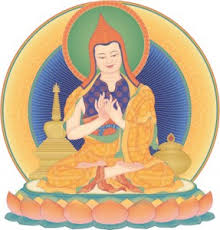 A Kadampa is someone who integrates Buddha’s teachings into their daily life.
A Kadampa is someone who integrates Buddha’s teachings into their daily life.
More specifically, Kadampa Buddhism is a special tradition of Mahayana Buddhism founded by the Venerable Atisha, an Indian Buddhist Master who revolutionized the way people practiced Buddhism in both India and Tibet in the 11th century. Atisha arranged the vast collection of Buddha’s teachings into a clear, step by step system for others to follow and practice, skillfully re-presenting Buddha’s teachings in a way that was relevant to their everyday lives. Atisha’s simple, sequential and practical presentation of Buddha’s teachings became known in Tibetan as “Lamrim”, or “The Stages of the Path to Enlightenment” in English.

Ka = all of Buddha’s teachings
dam = a practical presentation of Buddha’s teachings that is directly applicable to modern society
pa = person
This brilliant presentation of Buddha’s teachings, Lamrim, is the heart of meditation and modern Buddhism in the Kadampa Tradition. Later, Je Tsongkhapa (1357-1419) transformed the way Dharma was practiced in Tibet, adapting the presentation of Lamrim to the people and culture of that time. Today, Geshe Kelsang Gyatso is compassionately re-presenting these precious Lamrim teachings to the people of the entire world in a way that is perfectly relevant to our modern society and way of life.
These teachings and meditations help us understand the role our mind plays in our daily experience, giving an insight into the underlying causes of both pain and happiness, and showing us how to generate more positive, powerful and wholesome states of mind. Through developing virtuous inner qualities we make better choices in our life, thereby impacting ourselves and others in a profound, meaningful way. Although the teachings are ancient, they are just as relevant today as when originally taught; they are scientific methods that can be tried, tested and experienced by anyone, at any time, in any culture.
